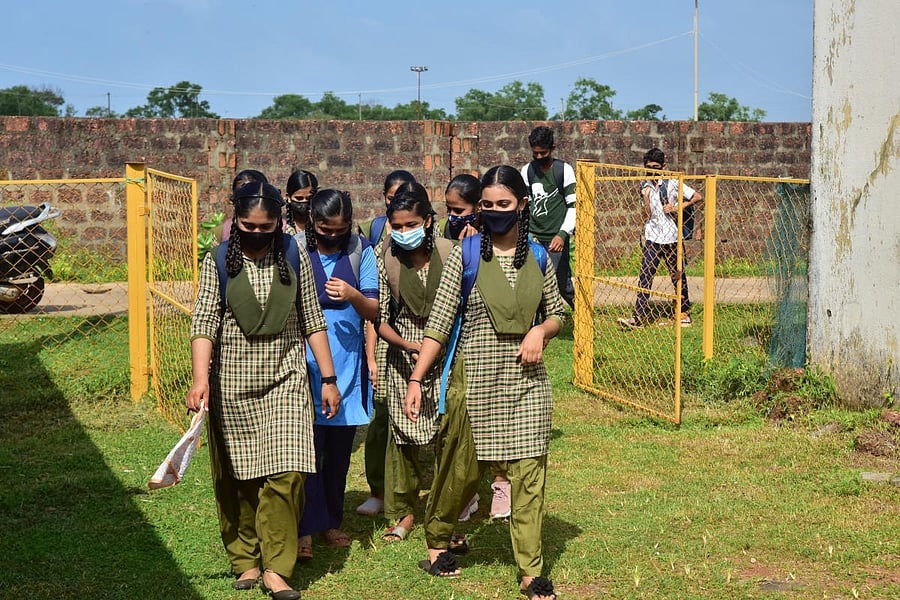
Tripthi M (name changed), a 12-year-old, plays in the tiled basement of her school near Koramangala, Bengaluru, but she longs for the open space of a playground. All the classrooms in her school are situated in one tall building. The dearth of space in her school and the busy streets around her home give her little opportunity to play. “We have a computer and science labs, but we don’t have space to run,” she says.
Cities like Bengaluru have been growing at a meteoric pace at the cost of open spaces like playgrounds. Some schools even entirely forego ground spaces. With limited options, like Tripthi, many students have no other option than to neglect play, physical fitness and their interest in sports.
But the growing child needs space to play. L Savitha, an educational consultant emphasises that playgrounds are as essential as classrooms. “It is a natural setting where children learn many life skills. It is also a place where a lot of incidental learning takes place — they learn through trial and error,” she says.
Classrooms and homes are regulated environments where teachers or parents establish and implement rules. Playgrounds are among the few spaces where children make their own rules and learn how to self-regulate. Called free play, this time can enable children to test their own instincts and use their creativity to make games of their own.
In this unregulated environment, children also learn how to interact and relate to their peers and work on improving their communication. For nine-year-old Om Abhijit, playtime on the school grounds is not only fun and enables him to learn new sports but it is in this time that he makes friends and understand what they like or dislike.
Time spent playing also improves cognitive function. During physical activity, nerve cells in the hippocampus region and prefrontal cortex are triggered to form new connections. This helps with retention and improving concentration. The decline of play has been linked to behavioural problems, attention and hyperactivity-related disorders as well as stunted creative and cognitive development.
Studies show how physical activity can help with stress and anxiety relief. For students in high pressure environments, playgrounds can provide much-needed relief. “A lot of cross conversation and socialisation happens on playgrounds and this helps children deal with their emotions and learn how to express them,” says Savitha.
Physical fitness
Playground time is coveted in Om’s school. “My class has PT period once or twice a week. Even then, we have exercises in the beginning and are only let off to play on our own after that.” The time flies by without much notice, and then it is back to regular schooling. “I wish we had more time to play,” he says.
Vishwanath M N, a sports psychologist based in Bengaluru says that schools do not prioritise physical activity. Often, ‘games’ period is limited to one hour or forty minutes of play a week in schools that have playgrounds. Even this is at the mercy of teachers who may cancel this in favour of completing pending portions. “But for the holistic development of children, physical development is essential. Play time ensures that children remain fit and stave off obesity and other lifestyle diseases,” he says. The US Centre for Disease Control recommends that children engage in vigorous or moderate play for an hour for physical development.
Several studies found that play enables the development of fine motor skills, helping maintain cardiovascular health and with physical growth. Moreover, regular visits to the playground also help in habit formation according to Seetha Ananthashivan, the founder and executive trustee of Bhoomi college. “Human limbs are made for moving and it is obvious that playgrounds are important for the overall development of a child,” she says.
Regulation
Even though the benefits of playgrounds are numerous and obvious, schools and parents often disregard learning and development that happens outside of the class. This, according to Niranjan Aradhya, a development educationist, is because, “we don’t value overall development. We want children to get good marks. This is a very myopic understanding of education.”
Children have the right to open spaces. The United Nations Convention on the Rights of a Child (UNCRC), which India ratified, asserts that states must recognise the “the right of the child to rest and leisure, to engage in play and recreational activities appropriate to the age of the child…”
Under the The Right of Children to Free and Compulsory Education Act’s (RTE) infrastructural standards, all schools had to provide playgrounds. However, the Ministry of Human Resource Development relaxed this rule in 2012 and the New Educational Policy now dismantles this right, citing the ‘practicality’ of playgrounds in urban spaces. “Children are not political constituencies. Hence, all these decisions that may cause a loss for children go without consequence,” says Aradhya.
To ensure the holistic development of students, educationists recommend that parents persuade schools to preserve playgrounds and allot more playtime to students. Government regulation can prevent new schools without playgrounds from setting up. At the very least, parents must seek out some open space where children can move, run and play with freedom and safety.